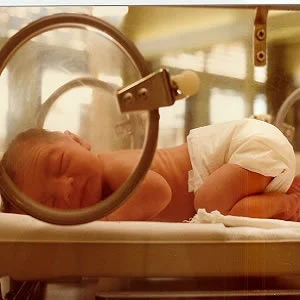According to a new research published in the Archives of Disease in Childhood (Fetal & Neonatal Edition), a fall in one to one nursing care of very sick and premature new-borns is linked to a higher rate of death in neonatal intensive care.
The research, conducted by University of Warwick shows that the proportion of this type of nursing care in ICUs declined by around a third between 2008 and 2012.
British Association of Perinatal Medicine (BAPM) recommendations state that one to one nursing care should be provided to newborns in neonatal intensive care and a ratio of one nurse for every two infants should be ensured in high dependency units. For infants in special care, BAPM recommends a ratio of 1:4. However, very few neonatal units actually achieve these required staffing ratios.
During this study, the researchers assessed the impact of one to one nursing on the monthly death rate in tertiary level neonatal units in England. They extracted monthly data from the National Neonatal Research Database (NNRD) on infants admitted to 43 tertiary care units between 2008 and 2012. They then calculated the proportion of neonatal intensive care days or intensive care admissions who received one to one nursing care.
The findings show that between 2008 and 2012, the proportion of one to one nursing in tertiary level neonatal units fell from 9 percent to 6 percent. Proportion of infants who received one to one nursing care declined from 39.5 percent to 36 percent. An average of 4.5 infants out of every 100 who were receiving intensive care died every month. The researchers also found that every 10 percentage point fall in the proportion of ICU care days with one to one nursing care was associated with a monthly increase in the inpatient death rate of 6 per 1000 infants.
Lead author Dr Sam Watson, of the University's Warwick Medical School said: "We believe the results in this study provide some evidence in support of a one to one nurse to patient ratio in neonatal intensive care in England, in line with BAPM guidelines, and therefore provide increased nursing labour provision on neonatal units in England."
In an associated editorial, Drs Fenton and Turrill, and the chief executive of new-born baby charity, Bliss, also reveal that of the 90,000 babies admitted to neonatal units in England, Scotland and Wales in 2014, only 14 percent of the care days was in intensive care.
The Health Secretary's ambition to reduce rate of stillbirths, neonatal and maternal deaths by 30 percent by 2030 can only be achieved if proper focus was placed on staffing levels. But the government's recent shortages are expected to worsen the situation rather than improve it. It is still unclear whether plans to replace student nurse bursaries with loans will increase the number of trained nurses or will act as a hurdle for those who wish to join this profession.
Source: Archives of Disease in Childhood (Fetal & Neonatal Edition)
Image Credit: Wikimedia Commons


![Tuberculosis Diagnostics: The Promise of [18F]FDT PET Imaging Tuberculosis Diagnostics: The Promise of [18F]FDT PET Imaging](https://res.cloudinary.com/healthmanagement-org/image/upload/c_thumb,f_auto,fl_lossy,h_184,q_90,w_500/v1721132076/cw/00127782_cw_image_wi_88cc5f34b1423cec414436d2748b40ce.webp)







